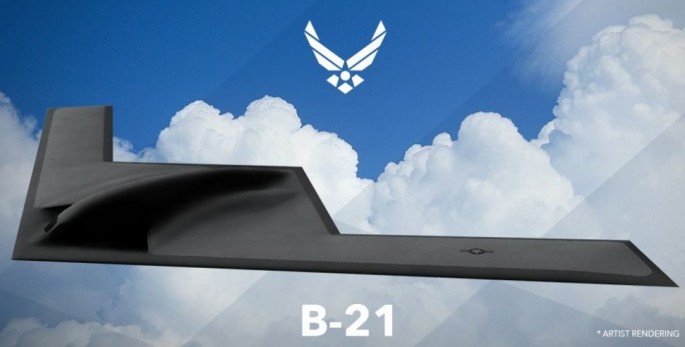The U.S. Air Force on Sept. 17 will reveal the official nickname for the deadliest bomber ever built by man -- the Northrop Grumman B-21 Long Range Strike Bomber, unofficially called the "China Bomber" in some quarters.
The winning name will be one among the 15 finalists in a name-that-bomber contest launched last February by Air Force Secretary Deborah Lee James during the Air Warfare Symposium of the Air Force Association (AFA).
The crowdsourced contest using the internet drew over 4,600 names, from which the 15 finalists were selected. The winning name will be announced during the 2016 Air Warfare Symposium from Sept. 17 to 18.
"We received an overwhelming number of nominations, which to me is a testament to how invested our Airmen are in the future of their Air Force," said James. "Thank you to everyone who submitted, and we're looking forward to announcing the B-21's name in the fall."
The alias for the powerful B-21 had better live up to the intense hype surrounding this bomber, which will be the most advanced and most powerful built by any nation.
The B-21s brother strategic bombers in the Air Force have imposing nicknames. The B-1B supersonic bomber is called the Lancer (for the cavalrymen that charged their enemies with lances); the B-2 is named Spirit on account of its stealthiness while the venerable B-52 that's six decades old is affectionately called "Stratofortress" because it carried the heaviest bomb load of any bomber when it entered service.
The B-21 was first known as the "Long Range Strike-Bomber" or LRS-B distinguished by its very long range and its ability to loiter for extended periods over distant targets such as those in the South China Sea and Asia.
The B-21 will likely be a very long-range subsonic aircraft with broadband stealth capability. It's being designed to defeat low-frequency radars as effectively as high frequency sets.
More ominously, the B-21 will be capable of carrying the entire range of air delivered nuclear weapons in the U.S. arsenal, a capability only currently afforded B-52s.
Ultimately, the USAF plans to transform the B-21 into the world's first unmanned or robotic strategic bomber with unmatched endurance.
In the unmanned role, the B-21 will be used in non-nuclear combat to rain down guided missiles or guided bombs onto land or naval targets. The nuclear capable versions of the bomber will be manned.
What will distinguish the B-21 from the B-2 is the former's enhanced stealthiness and its capability to loiter or hover over a battlefield for extended periods of time, allowing it to hit multiple targets of opportunity with precision.
It's being designed to survive daylight raids in heavily defended enemy territory. The B-21 will carry a weapons load of up to 12,700 kg.
The B-21 is intended to "manage" China in a future conflict.
The Air Force plans to purchase at least 100 B-21s at a cost of $550 million each. James described the B-21 as a fifth-generation global precision attack platform that will give the U.S. networked sensor-shoot capability. Initial operating capability for the B-21 is expected to be reached by 2030.



























